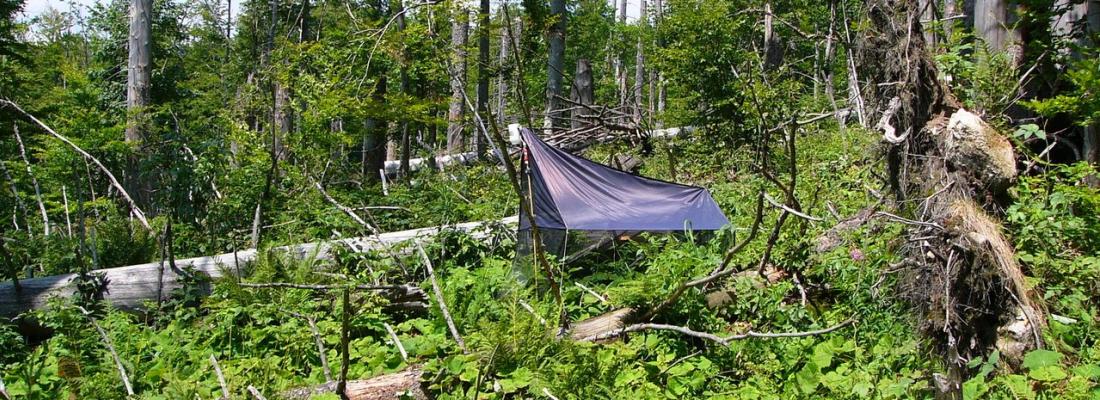Biodiversity Reading time 2 min
Insect DNA metabarcoding to assess the state of health of forests
PRESS RELEASE - How can we measure the impact on biodiversity of forest dieback caused by global changes to the environment? For the first time, an international research team involving scientists from INRAE, CNRS and the Université de Tours has analysed the diversity of insect communities that represent 60% of forest biodiversity, using a technique called DNA metabarcoding. This method is used to conduct a global analysis of samples taken in the environment. This study involved over 200 samples of insects from Pyrenees fir forests. Their results, published on 18 January in Communications Biology, show that fir forest dieback significantly modifies the composition of insect communities and could have an impact on ecosystem services such as pollination and decomposition. The study also shows that DNA metabarcoding could be used in the future by forest managers to monitor biodiversity and adapt their management methods.
Published on 18 January 2022

Photo: Trap for capturing insects in an experimental plot with high forest dieback in the Pays de Sault, French Pyrenees mountain region.
Global changes are profoundly affecting forest ecosystems. Droughts, combined with high temperatures and attacks from pathogens and certain insects, are leading to increased mortality of some key tree species in Europe’s forests, such as the silver fir. Species diversity, abundance and biomass of insects, which account for 60% of forest biodiversity, have recently undergone marked decline in European forests. Until now, forest biodiversity monitoring only looked at a small number of bioindicator species1 and relied on time-consuming and costly sampling methods. However, taking into account hyper-diverse groups, such as certain groups of insects, is essential to get a better indication of the health of forest ecosystems. This is now possible thanks to the development of new molecular analysis techniques such as DNA metabarcoding: this innovative method makes it possible to quickly identify the different DNA present in a sample taken from the environment, to know the number of species present and to identify most of them thanks to the reference DNA barcoding databases.
Nearly 3,000 insect species screened using DNA metabarcoding
The team studied 56 managed fir forests in the French Pyrenees mountain region which have suffered varying degrees of dieback as a result of repeated heat waves since 2003. Over 200 insect samples were collected with passive traps over the course of a year. Using DNA metabarcoding analysis, the researchers were able to identify nearly 3,000 insect species in the samples. Their results show that while forest dieback does not affect the number of species present, the composition of the samples differs greatly between fir stands with a high degree of dieback and those with little or no dieback. In particular, species assemblies of two ecologically very important groups – diptera (flies, hoverflies, mosquitoes, horseflies, gnats) and hymenoptera (wasps, bees, ants, parasitoids and hornets) – are closely associated with high levels of dieback. This can have consequences for essential ecological functions such as pollination, decomposition and the regulation of arthropod populations2.
If dieback becomes so widespread that it affects all fir forests, it could increase the risk of loss of rare species through landscape homogenisation. On the other hand, the practice of sanitation felling of dying fir trees in the Pyrenees does not seem to have a significant impact on either species diversity or the composition of insect communities. However, it is essential to preserve certain environmental features that support biodiversity at different scales. Altitude and canopy openness are the main factors governing changes in insect communities at the local scale. The amount of available dead wood, and the diversity and density of tree-related microhabitats (e.g. tree cavities, stripped bark, etc.) that can host certain highly specialised insect species are, at larger spatial scales, the biggest environmental determinants for maintaining insect community diversity.
This study shows that forest dieback significantly affects the composition of forest insect communities and the resulting ecological functions. More broadly, it has demonstrated the feasibility of using DNA metabarcoding for monitoring forest biodiversity, particularly for assessing the impact of global change and the resilience of forests.
1 Bioindicator: an organism or group of organisms whose presence or state provides information on certain environmental characteristics of an ecosystem and on the impact of environmental changes (e.g. drought, pollution, etc.).
2 Invertebrates with a body made up of jointed segments, including crustaceans, insects, arachnids, etc.
Reference
Lucas Sire, Paul Schmidt Yáñez, Wang Cai, Annie Bézier, Béatrice Courtial, Jérémy Cours, Diego Fontaneto, Laurent Larrieu, Christophe Bouget, Simon Thorn, Jörg Müller, Douglas W. Yu, Michael T. Monaghan, Elisabeth A. Herniou & Carlos Lopez-Vaamonde. Climate-induced forest dieback drives compositional changes in insect communities that are more pronounced for rare species. Communications Biology, 5 Article number: 57 (2022). DOI : https://doi.org/10.1038/s42003-021-02968-4
Study carried out in the framework of the ANR CLIMTREE project
